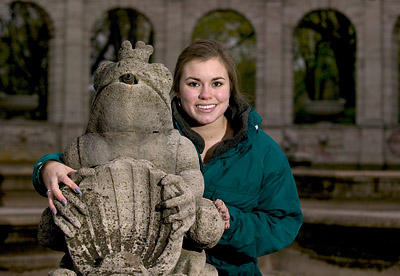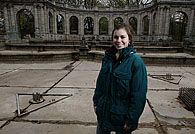Friedrichshain Volkspark
Friedrichshain Volkspark — by Melissa Simones ’06
I lived in Friedrichshain, an eastern district of Berlin that at first seemed sterile and uninviting. My street, Karl-Marx-Allee, was composed of gigantic apartment blocks constructed during communist times, and they stretched for miles.

I grew up in Auburn and in Greene, Maine, and have never experienced big-city life for more than a week or so. The Bates campus is four and a half miles from my home and family, and I’ve lived around the woods most of my life. Living in Berlin could not have been more different for me.
But soon after arriving, while strolling around my neighborhood, I discovered a place of comfort and interest: the Friedrichshain Volkspark (People’s Park). It was an inviting park where vibrant Berliners enjoyed themselves. Children played, people exercised, and a café sat near a pond. Various monuments dotted the park.
I felt relaxed and comfortable strolling around the green and spacious grounds, and its 160-year history intrigued me. The park symbolizes Berlin’s past, present, and future, from Prussian times to the Cold War, from Nazis to communists. 
Friedrichshain Volkspark became a haven for me, a connection to nature and a connection to myself in the midst of a large city in a far-off continent.